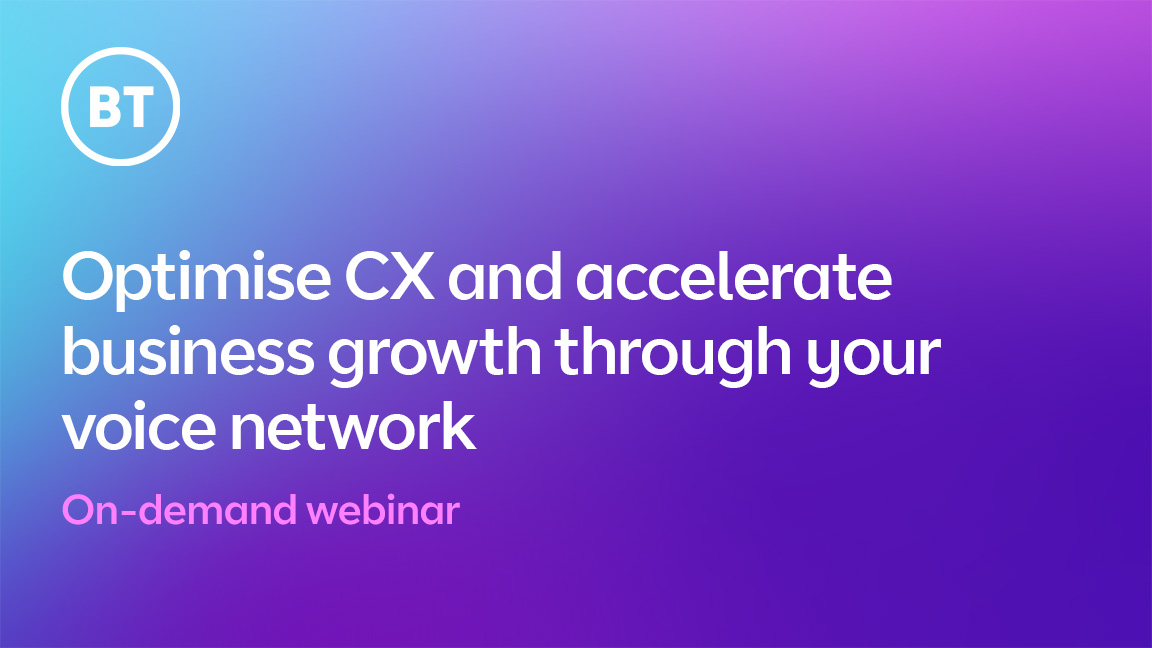Getting your workplace transformation right for today and tomorrow
The appetite for radical post-pandemic business transformation is strong, but any plans must be handled with care if they’re to be successful

Big changes over the last few years have fundamentally transformed the way organisations operate. The scale and nature of workplace transformation has shifted, with more emphasis on accommodating all employees regardless of where they work. Most, if not all, agree further change is on the horizon, but this process must be handled correctly, as rushing any workplace transformation, or failing to understand the specific reason for the change, can cause serious and long-lasting issues.
Indeed, hurrying downsizing, remodelling or the rollout of a hybrid work strategy can end up costing more time, money, and efficiency in the long term if all eventualities aren’t accounted for, and each stakeholder isn’t consulted and engaged up front.
Organisations planning to undergo a workplace transformation in the coming months must fully understand the needs of their workforce, as well as considering elements such as data demands and information security. It’s also important to build relationships with experts, rather than going it alone, as this added guidance enables you to deliver on digital transformation projects in the most successful and efficient way possible.
Assessing the scale of the challenge
Making changes to workspace configuration and implementing a hybrid work strategy, are higher priorities for global enterprises, according to research Iron Mountain has conducted with Economist Impact, the research arm of The Economist. The majority (61.2%) of organisations also say their employee engagement demands significant, much or some improvement. Such changes must come hand-in-hand with digital transformation goals and activities. These are both key pillars in the mission to raise resilience. Indeed, 79.1% of executives surveyed agreed that managing physical work locations was important in fostering long-term resilience, while just over half are changing their approach in order to invest in flexible workspaces that can be adapted to workplace needs post-pandemic.
Despite this widespread enthusiasm for business change and digital transformation, sheer willpower isn’t enough to see these ambitions through. Regardless of industry there are several guiding principles that must be followed in order to appreciate the scale and nature of the challenge. These will be unique to each organisation but there are also commonalities such as the desire to reduce costs, increase productivity, and guarantee an improvement in employee wellbeing.
Building a workspace for the future
Although COVID-19 gave rise to a dramatic increase in remote working – which has permeated into enterprise culture now that we have learned to live with the impact of the pandemic – some people still yearn to come into the office. Regardless of whether employees are planning to come in five days a week, or once a fortnight, focusing on modernising that physical space is key to raising their morale and productivity. It’s more likely than not, therefore, that an office that’s been untouched since before the pandemic is not fit for the modern age.
Before organisations begin ripping out desks and filing cabinets, they must first think strategically and – with the guidance of expert consultants – evaluate the needs of their unique workforce. Businesses should take an inventory of all physical and digital environments to ensure their purpose is clear, and eliminate any inefficiencies that exist. Identifying gaps in manual or digital processes, any access needs or security holes, are good first steps.
Although the physical space is important, there’s a lot more that goes on behind the scenes that needs to be addressed. Data protection and the way the enterprise safeguards its assets in the age of hybrid work, are paramount. This not only spans personal information the organisation might hold in records and documents, and that workers need to access, but the distribution and management of physical devices like laptops. When undergoing a radical business transformation such as this, success hinges on staying on top of each and every aspect. This can be overwhelming without expert assistance to ensure the process means your business is as resilient as it can possibly be.
It’s vital to ensure that key stakeholders, such as corporate real estate, security, records and information management are included in the decision making process. Each brings an important perspective to planning your workplace transformation. By ensuring clear and transparent communication between the relevant parties, you can ensure transformation that suits everyone and best serves the needs of your business.
Starting afresh
Amid the myriad considerations that organisations must take when undergoing any business transformation, leaning on a trusted vendor like Iron Mountain and its Clean Start® solution will give business leaders the confidence and assurance to know they are on the right path. An Iron Mountain Clean Start assessment, conducted by a team of experts, can guide enterprises through key risk and opportunity areas of a workplace reconfiguration.
Iron Mountain Clean Start comprises several components including secure storage, secure destruction and digital transformation, with a multi-pronged approach ensuring organisations are covered across the board. Using Clean Start can help you optimise your office footprint, cut costs, clean out physical and digital spaces, and maximise the efficient use of assets and space. Often enough, such a workplace transformation comes hand-in-hand with digital transformation projects.
The age of hybrid working means many organisations have seen the sands shift beneath their feet, meaning they need to react at pace and with decisiveness in order to stay competitive. Ensuring any transformation is reinforced with expert guidance at every stage is essential to guaranteeing your agility, flexibility and resilience in the future.
Get the ITPro daily newsletter
Sign up today and you will receive a free copy of our Future Focus 2025 report - the leading guidance on AI, cybersecurity and other IT challenges as per 700+ senior executives
-
 Why keeping track of AI assistants can be a tricky business
Why keeping track of AI assistants can be a tricky businessColumn Making the most of AI assistants means understanding what they can do – and what the workforce wants from them
By Stephen Pritchard
-
 Nvidia braces for a $5.5 billion hit as tariffs reach the semiconductor industry
Nvidia braces for a $5.5 billion hit as tariffs reach the semiconductor industryNews The chipmaker says its H20 chips need a special license as its share price plummets
By Bobby Hellard
-
 IT professionals aren’t budging on flexible work demands – and more than half say they’ll quit if employers don’t meet expectations
IT professionals aren’t budging on flexible work demands – and more than half say they’ll quit if employers don’t meet expectationsNews Analysis from Randstad shows 40% of UK-based IT pros have quit over a lack of flexible work options, while 31% of workers globally have done the same.
By Ross Kelly
-
 Optimise CX and accelerate business growth through your voice network
Optimise CX and accelerate business growth through your voice networkwhitepaper Protecting the human experience in a digital world
By ITPro
-
 'The tide seems to be turning towards office attendance': 64% of hybrid business leaders want staff back in the office – but many worry that enforcing RTO mandates will drive employees away
'The tide seems to be turning towards office attendance': 64% of hybrid business leaders want staff back in the office – but many worry that enforcing RTO mandates will drive employees awayAnalysis Many UK business leaders want their staff back in the office more frequently, but they’re scared to implement return to office (RTO) mandates in fear of worker revolts.
By George Fitzmaurice
-
 Enterprises are doubling down on IT optimization strategies – and it’s delivering huge financial returns
Enterprises are doubling down on IT optimization strategies – and it’s delivering huge financial returnsNews Organizations that have cracked IT cost optimization and innovation reap the rewards both financially and in terms of time to market.
By Emma Woollacott
-
 Employees are dead set on flexible working arrangements – three quarters would turn down a role that didn't offer hybrid options as work-life balance becomes more important than pay
Employees are dead set on flexible working arrangements – three quarters would turn down a role that didn't offer hybrid options as work-life balance becomes more important than payNews New research shows workers are increasingly demanding flexible working arrangements from employers.
By Emma Woollacott
-
 Nearly half of tech workers are seeking new roles – declining employee benefits and reduced flexible working options have staff looking elsewhere
Nearly half of tech workers are seeking new roles – declining employee benefits and reduced flexible working options have staff looking elsewhereNews While salaries are rising for tech workers, other benefits are in decline, leading to a fall in job satisfaction
By Emma Woollacott
-
 IDC InfoBrief: Sustainability doesn’t need to be all stick and no carrot
IDC InfoBrief: Sustainability doesn’t need to be all stick and no carrotwhitepaper CIOs are facing two conflicting strategic imperatives
By ITPro
-
 Untethered: How CIOs and CISOs are paving the way for the new hybrid workforce
Untethered: How CIOs and CISOs are paving the way for the new hybrid workforceWhitepaper Effective techniques to transition from exposed legacy infrastructure to an effective zero trust strategy
By ITPro